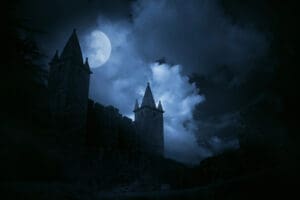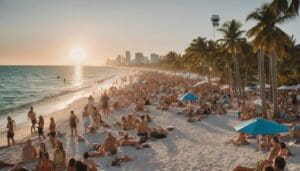The Magnificence of Cork City through the Ancient and Modern Times
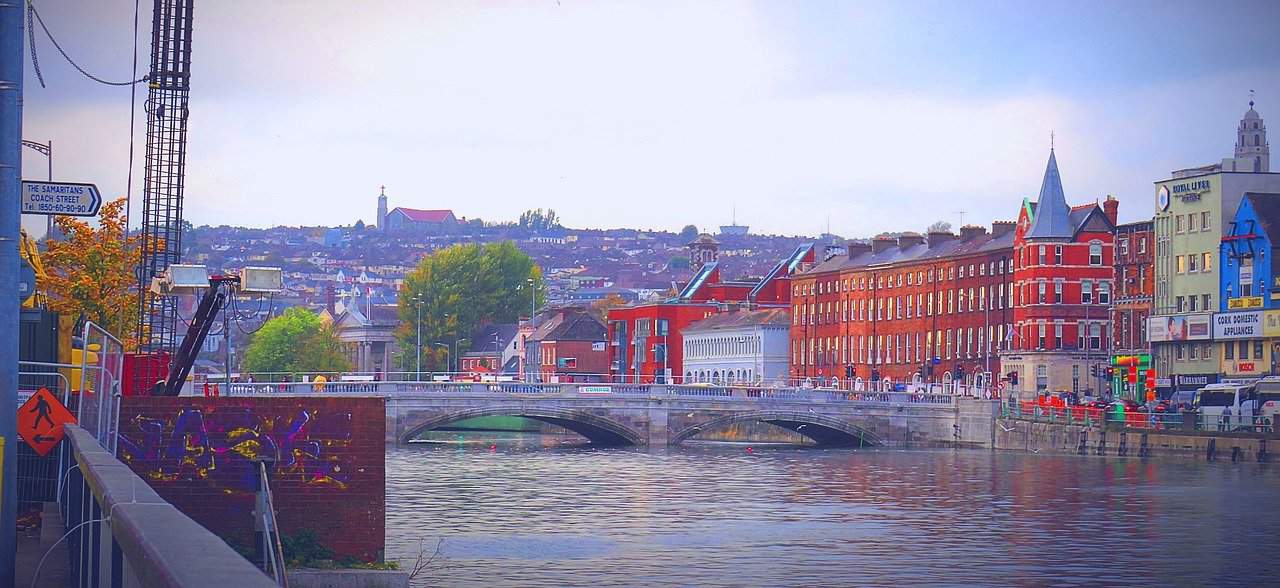
Updated On: April 07, 2024 by Salma Ihab
Are you constantly chasing the travel bug? We know how satisfying it is for you to travel the world and watch what it has in store. You always feel overwhelmed with all the places you want to visit. The world is too big, and your time isn’t just as significant. But that doesn’t ever de-ignite the flame of the desire to explore the universe. Since you are always interested in learning about a new culture, we will make things easier for you. We might recommend Ireland to you. However, the country is extensive, so you must get the best out of your Irish experience. Ever heard about Cork? It is one of Ireland’s largest counties. It is full of exciting places to visit and a fascinating timeline. If you already got caught up, here’s all you need to know about the county.
A Brief History of the County of Cork
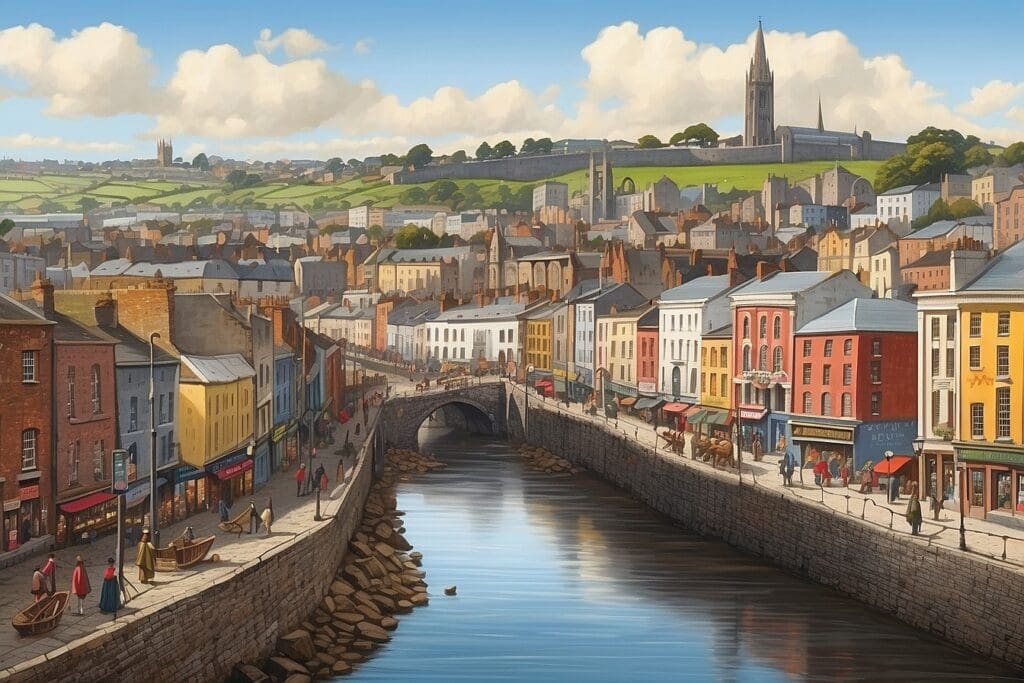
Ireland has been around since the very ancient times. However, some of its cities are older than others. Cork is one of the most ancient cities in Ireland. It is even older than many European cities outside the borders of Cork. The city sits on the southern coast of Ireland.
It dates back to the sixth century and is considered the second-largest city in Ireland. Dublin is the largest country ever in Ireland. River Lee passes by the borders of Cork Island, forming numerous water passages. The marshy valley on estuarine islands where Cork first developed. Progressively, the city development extended to the steep hills and all the day to the north and south.
Saint Finbarr founded the city in the seventh century. He established a monastery that still exists today. In modern times, the monastery is now what people call St. Fin Barre’s Cathedral. Thanks to the monastery, was the reason the settlements formed and led to the city’s development.
The Development of Cork throughout the Centuries
From the ninth century, Cork began facing raids from foreign settlers, including the Vikings. It took them around two centuries to become traders, and they settled in Cork. The Vikings’ mindset changed from the eleventh century. Evidence from archaeological excavations showed that the first settlements developed in the late eleventh century. It was the Hiberno-Norse period; those people were born after the intermarriage of the Irish and the Vikings.
The Spread of Foreign Settlements
Settlements developed a lot during the twelfth, thirteenth, and fourteenth centuries. In the late twelfth century, a new race entered Ireland: Anglo-Normans. The latter captured the Hiberno-Norse; they managed to turn the city into a prominent trading centre. During that time, there were stone walls that already fortified the city. Protection was at its highest, even from the water gates. Some enemies attempted to enter the city through the water, using boats. However, two castles defended the city against the enemies of water. Those castles were the Queen’s Castle and the King’s Castle.
During that time, the city’s entrance was through either the North or the South Gate Bridges. There was also a central bridge that connected the two sides. That bridge passed over a water channel where harbours were at its edges.
The city remained an important trading centre in Ireland for the following centuries. Besides, it became a significant port in the thirteenth and fourteenth centuries.
The Age of Wealthy Merchants
The fifteenth century was the arrival of new inhabitants in Cork. They were the Dominicans and Franciscans; they lived alongside the Anglo-Normans. Over and beyond, that century also saw the beginning of the abundance of affluent merchants around the county. Most of those wealthy families were born in the countryside. However, they do not have sufficient food or the needed support. Thus, they travelled to Cork, where the importation of many goods made them as rich as they were.
They occupied most of the public and prevalent offices around the city. There was an abundance of the merchants at that time. However, they were not all in the same class; what differed them from one another was their wealth and impact. The wealthier got to have the upper hand in most of the decisions, including the administration of the county. Those families included the Goulds, the Tirrys, the Skiddys, the Galweys, the Roches, and much more.
In the late fifteenth century, the city’s affluence started to be demolished. That was when the nobility of Gaelic Ireland filled higher positions and had a significant impact. Things remained as such until the beginning of the sixteenth century. More than a few blustery incidents were taking place in Ireland then. Even the walls witnessed a lot of damage until they were no longer there.
Flourishing for Once Again
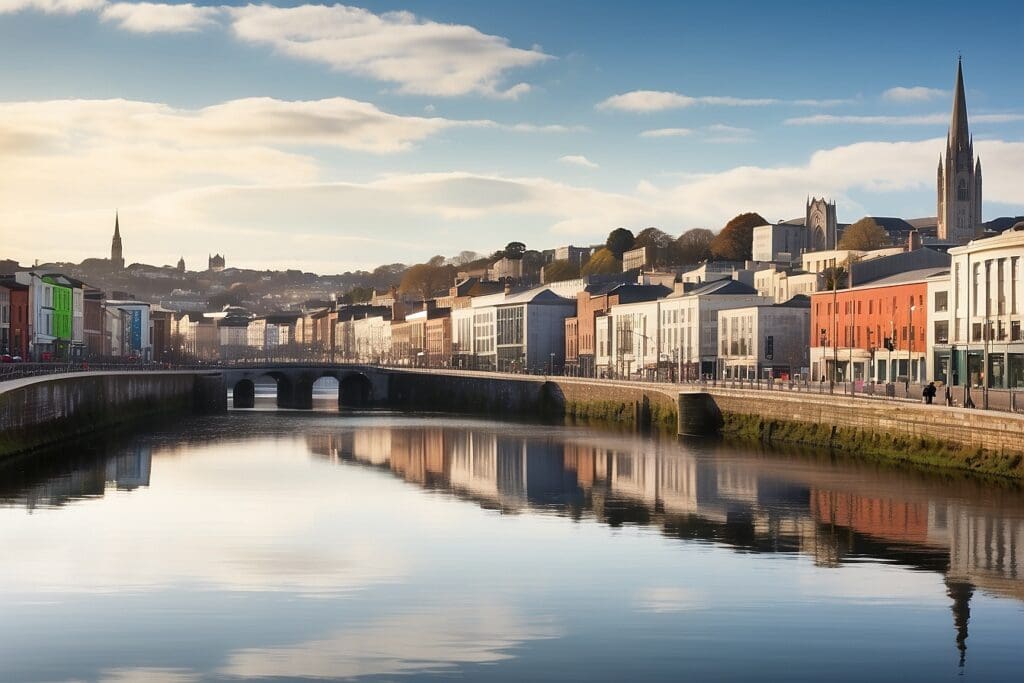
Since the fifteenth century, things in Cork were not at their best, not even close. The situation lasted until the eighteenth, when things started to take a successful detour. The city began thriving even though the fantastic walls were no longer around due to the Williamite siege. But, the thing is, the walls were not required anymore. Instead, they had not even received a restoration; people left them to fall into scruffiness. On the other hand, the water channels surrounding the city vanished. That fact made way for new streets to appear. Even the most famous street, St. Patrick’s Street, was once a river but disappeared like the rest of the river channels.
Long story short, it was the era of the most significant physical development of the city. Besides the St. Patrick Street, many other streets were established. Those include Henry Street, Sheare’s Street, Cornmarket Street, Grattan Street, the Grand Parade, and more. There were also a lot of bridge constructions that connected the city with the surrounding suburbs.
If you ever visit that city, you will cross too many bridges that you may lose count. That may sound weird since most rivers and water channels were drained. However, River Lee remained until modern times; that’s why many bridges pass across the other side above it.
Who was Saint Finbarr?
Saint Finbarr was the one who established the famous monastery of Cork. After his fascinating establishment, the city started to come to life with the arrival of the foreign settlements. People usually refer to him as Barra for a shorter and more accessible name.
Finbarr was born in a city near Bandon called Templemartin. His original name was Lochan, but he became known as Finbarr when he arrived in Ireland. He, along with other monks, went on a pilgrimage to Rome. Also, he used to teach a lot of monks and students during his stay in Cork.
In 606, he founded the monastery above the River Lee. That area now is what people refer to as Gill Abbey. What sits in that area right now is a building that the Church of Ireland owns. It named the building Saint Fin Barre’s Cathedral. Fin Barre was one form of the name Finbarr. That man was one of the prominent saints in Ireland. People now celebrate his memorial on a feast day on 25 September.
The Ultimate Tourist Attractions in Cork
Not only does the city have a fascinating history to tell, but it also possesses several mesmerising places. It doesn’t matter whether you’re a visitor or not; it always feels good to be at one of those enthralling sites. So, we did the homework for you and gathered all the possible places you can visit in Cork. Check them out.
Ballycotton Cliff Walk
Since the list is long, we will start with Ballycotton Cliff Walk. Ballycotton is a fishing village where you can escape reality for a while. It has several beaches and more than a few seafood restaurants. Most importantly, it has a pretty Cliff Walk that extends for about five miles.
That Cliff Walk starts from the village of Ballycotton and to Ballyandreen Beach. The village may not exist right within the borders of Cork. However, it is only 40 minutes of driving away. You can always go there.
Blackrock Castle Observatory
Castles are always a great destination all around the world. It usually tells a lot about the history of the city in which it exists. This time, we are referring to the Blackrock Castle Observatory. It sits on the shores of the River Lee at the point where the Cork Harbor exists.
The castle has been around since 1828; the observatory part features numerous exciting services. Those services include a cinema, a planetarium, and collaborative exhibits. The observatory exhibits are open for visits. It shows various interesting displays about nature, science, and space. Besides, a lot of important events are usually held in the castle.
Blarney Castle and the Blarney Stone
Have you ever heard about the Blarney Stone? It is a well-known monument in Ireland and one of its prominent attractions. The Blarney Stone resides inside Blarney Castle, and there are a lot of stories and superstitions around it. The builder of the Blarney Castle was Cormac MacCarthy; he was an Irish Chieftain about six centuries ago. Besides, he highly succeeded in attracting tourists from everywhere to visit that castle.
The castle looks magnificent from the outside and holds fantastic things to behold. People can climb the fortification inside the castle and discover all that is inside the enormous stone building. There are also shops inside the castle where you can buy various stuff.
Cobh
Cobh is a popular port in Ireland that you will never regret visiting. It is one of the many historic places in the country. Besides, it used to be called the Queenstown in ancient times. Remember the famous Titanic ship? Its last call was at Cobh Port right before its fated maiden voyage.
This may be one of the most famous stories associated with the port. Despite the doomed fate of Titanic, Cobh is still the favourite dock for the world’s cruise liners. Besides the port, there are other attractions to explore. Those include the Cobh Museum, the Queenstown Story Heritage Centre, and the Titanic Experience.
Cork Butter Museum
People in Cork care about food a lot. This might be the case in many places worldwide, but it is a big deal here. The Cork Butter Museum reveals all the delightful Irish food, particularly dairy. Visitors go on museum tours, watching how Ireland had been the centre of the butter trade in Europe.
The Irish produced the best-made butter, cheese, and milk thanks to the moderate climate. There is also an exhibition on how the domestic butter-making was traditionally crafted.
Cork City Gaol
Cork City Gaol is a jail that looks like a typical castle. It is a representation of bizarre classical architecture. Initially, it was a women’s prison, but that was during the War of Independence. Later, it became no longer acquainted with putting only women behind bars but criminals of both genders.
As a visitor, you are allowed to explore the castle-like prison and take a tour around. You will find yourself reliving the blustery times that Ireland had survived in the past. It may feel a bit creepy initially, but you will enjoy such an experience.
Crawford Municipal Art Gallery
Who does not fall in love with art at first sight? It doesn’t matter whether you’re an art lover; you are interested in seeing a masterpiece every so often. Crawford Municipal Art Gallery is not a place to miss while in Ireland. The gallery houses many Irish masterpieces, including portraits of Irish writers, paintings, sculptures, and more.
You will see portraits of exceptional artists like Elizabeth Bowen, Samuel Beckett, and more. This place has been around for centuries, and it has helped Irish art to bloom everywhere. The art gallery also has a well-known coffee shop called Airy Café. You can grab a warm cup of coffee while enjoying the splendour of the Irish art.
Elizabeth Fort
Elizabeth Fort is one of the historic sites in Ireland. It was built in 1601; however, the residents, at that time, were afraid of any potential invasion. They thought taking down the fort would keep them safer from invasions. However, in 1624, people decided to build back up at their own expense.
Oliver Cromwell was the one who added the final enhancements, resulting in the splendour we perceive today. Oh, and that castle offers a marvellous view over Cork city. Whoever had been there would support this claim abruptly.
The English Market
Here is one of Ireland’s most prevalent sites: the English Market. This market is remarkably old; it has been around since 1788. Foodies worldwide never miss the chance to pass by in Ireland. Some foodies travel specifically to behold the beauty of the English Market.
Interestingly, the market isn’t even English at all, but sources claim that it’s named after the origins of the protestant. It is so popular that this site is the best place to find traditional specialities. You can find the best quality in cheese, veggies, fish, fruit, bread, etc. Whenever you’re in Ireland, you’ll rarely come across someone who doesn’t know that market or hasn’t visited it. Thank goodness it had survived the fire that took place ages ago. Here is a little hint: Visit the Farmgate Café while you are around; it serves many pleasant dishes.
Fitzgerald Park and Cork Public Museum
Fitzgerald Park is an oasis of serenity that sits on the county’s outskirts. The name Fitzgerald came from the former Lord Mayor, Edward Fitzgerald; he was the one who planned Cork’s International Exhibition. This park is one of the country’s oldest tourist attractions. It embraces a museum called Cork Public Museum and many more entertaining means.
Fota Wildlife Park
Are you an animal lover? If the answer is yes, we have a fantastic surprise for you. Ireland possesses one of the world’s prominent wildlife parks. It is Fota Wildlife Park, a vast area of about 70 acres where numerous wild animals live. Those animals can roam around naturally instead of watching from behind bars.
The exciting part is that you can interact with them very closely. And by close, some animals may even invite themselves to your place. But make sure you never feed them.
Franciscan Well Brewery
Brewing was a very strong tradition in Cork. Thanks to the existence of the Franciscan Well, this tradition of brewing has been revived. The site’s name originates from the activities held on the site.
However, the name of the well originated from a medieval Franciscan monastery. They say that the well has healing properties. That is part of the Irish nation’s belief: the Irish blessings. Such beliefs are no longer around. People visit this place for the great-tasted beer; however, today’s type has no healing powers.
Kinsale
The town of relaxation and slackening away: Kinsale. It is only thirty minutes away from the city. That town is famous for yachting and fishing. It was formerly a medieval fishing port. This town represents a historic site; it was one of Ireland’s picturesque resorts. Over and beyond, the visitors will be glad to know that cafes are everywhere around the town.
The better news is some cafes and restaurants serve different styles, cuisines, and types of food. No matter what your taste is or what you prefer in foods and drinks, you will always find it there. Besides the fancy restaurants and food, it is a goal destination, too. However, the golf part has always been around in recent years, but not for so long.
There are always other activities that will keep you entertained at Kinsale. Those activities include visiting the wine museum, taking heritage town walks, and celebrating the annual gourmet festival.
St. Anne’s Church and Shandon Bells
The church of Saint Anne has been around since 1722; it has been very popular ever since its establishment. There are specific Cork sporting colours that everyone knows about; they are white and red. Those colours are inspired by people’s love of Saint Anne’s Church. The church embraces white limestone and red sandstone in its tower. That was actually how people got their inspiration regarding the two colours.
The church’s tower has a clock that people call the four-faced liar. The story behind that naming goes back to the fact that each clock face tells a time. Surprisingly, they are all different; there is no face like the other.
Saint Patrick’s Street
Saint Patrick was one of the prominent saints in Ireland. He was among the first who arrived in Ireland with the arrival of Christianity. Besides, he’d appeared in many of the famous tales of Irish mythology, including the Children of Lir. Thus, it was expected that naming a street after him would take place. Saint Patrick’s Street is one of the main shopping hubs in Cork. This street is located so close to the English Market. The distance between both sites is walkable. You will come across many eccentric architectural styles while strolling along the street. The governorate had always kept everything in check on that street, for it is a huge tourist attraction.
UCC campus (including Lewis Glucksman Gallery)
Finally, the list of the places ends at this point. While this is sad news, they still seem sufficient to keep your journey busy and joyful. UCC stands for University College Cork. The campus sits on the River Lee, where you can roam along the leafy banks.
What also makes the view startling are the trees that embellish the campus. You will find yourself entertained since all forms of art are on campus. Plenty of artworks exist, including paintings, photography, sculpture, and more. Boredom has no room on board this campus.
County Cork: A Must Visit
The city of Cork has so much to offer people, from its fascinating history and culture to its long list of great attractions to check out. It is full of Irish beauty and the perfect place to stop off during an Irish road trip. The best way to experience the county is to spend a few days there and soak up all it offers. You will not be disappointed with a visit to County Cork in Ireland.
Have you ever been to Cork? Do you have any great stories to share about your travels? We would love to know 🙂
Also, don’t forget to check out other places and attractions around Ireland north and south: County Kerry| County Monaghan| County Laois| Dublin City| County Armagh| County Kildare| Connemara|




